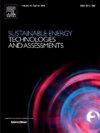基于大语言模型和加权外部因素优化的短期电力负荷预测
IF 7.1
2区 工程技术
Q1 ENERGY & FUELS
Sustainable Energy Technologies and Assessments
Pub Date : 2025-07-22
DOI:10.1016/j.seta.2025.104449
引用次数: 0
摘要
准确的短期负荷预测对现代电力系统的稳定高效运行至关重要。本文提出了一种新的预测框架,该框架将历史负荷的时间衰减加权平均值与来自结构化数据(天气和日历)和非结构化文本来源(新闻)的外部因素调整相结合。一个关键的创新在于生成式预训练转换器(GPT)的双重作用,它既用于从新闻文本中提取语义特征,又用于执行自适应自调整机制,动态地细化外部因素得分。该模型通过使用纽约州真实数据的案例研究进行了验证。结果表明,优化后的预测显著提高了预测精度,与初始估计相比,平均绝对误差(MAE)降低了90.7%,均方根误差(RMSE)降低了88.5%。这项工作证明了大型语言模型在能源预测中的实际潜力,并为将自然语言理解集成到定量预测系统中提供了一种可扩展的方法本文章由计算机程序翻译,如有差异,请以英文原文为准。
Short-term electricity load forecasting based on large language models and weighted external factor optimization
Accurate short-term electricity load forecasting is essential for the stable and efficient operation of modern power systems. This paper proposes a novel forecasting framework that integrates a time-decay weighted average of historical loads with external factor adjustments derived from structured data (weather and calendar) and unstructured textual sources (news). A key innovation lies in the dual role played by the Generative Pre-trained Transformer (GPT), which is used both to extract semantic features from news texts and to perform adaptive self-tuning mechanism that dynamically refines external factor scores. The model is validated through a case study using real-world data from New York State. Results show that the optimized prediction significantly improves forecasting accuracy, reducing the mean absolute error (MAE) by 90.7% and the root mean square error (RMSE) by 88.5% compared to the initial estimate. This work demonstrates the practical potential of large language models in energy forecasting and offers a scalable approach for integrating natural language understanding into quantitative prediction systems
求助全文
通过发布文献求助,成功后即可免费获取论文全文。
去求助
来源期刊

Sustainable Energy Technologies and Assessments
Energy-Renewable Energy, Sustainability and the Environment
CiteScore
12.70
自引率
12.50%
发文量
1091
期刊介绍:
Encouraging a transition to a sustainable energy future is imperative for our world. Technologies that enable this shift in various sectors like transportation, heating, and power systems are of utmost importance. Sustainable Energy Technologies and Assessments welcomes papers focusing on a range of aspects and levels of technological advancements in energy generation and utilization. The aim is to reduce the negative environmental impact associated with energy production and consumption, spanning from laboratory experiments to real-world applications in the commercial sector.
 求助内容:
求助内容: 应助结果提醒方式:
应助结果提醒方式:


